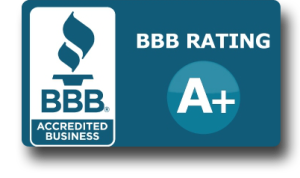Handling a Reverse Mortgage after death.
What do I do after death with my parents Reverse Mortgage and how to handle.
This question is very common, so I posted the rules after the last homeowner leaves the house. It gives me a chance to explain that this FHA Reverse Mortgage has FHA insurance, which means the estate cannot be passes a debt. Handling an estate after the death of a loved one can be stressful. If a family member had a reverse loan, it’s important to understand how to handle a reverse mortgage after death. If you’re the surviving spouse, you’ll want to know your options and responsibilities. If you’re one of the heirs, you have certain duties and decisions you’ll need to make. Whether you want to keep the home or not, you have options. You want to be sure that you understand what they are.
What to do About a Reverse Mortgage After Death. There are five options for handling a reverse mortgage after the death of the borrower.
Keep the property. In this situation, you must pay the loan in full, but never more than 95% of the property’s appraised value.
Sell the property. If the home is worth more than the loan amount, the heirs may sell the home, pay off the loan, and keep the remainder of the money from the sale.
Complete a short sale. Sell the property for 95% of its appraised value in a short sale to satisfy the loan.
Walk away. Walking away from the home will result in foreclosure and alleviates any responsibility for paying off the loan.
Sign a deed-in-lieu of foreclosure. This titles the property back to the lender. This allows the house to go into reverse mortgage foreclosure and gives the seller the property to satisfy the loan.
Reverse Mortgage After Death Timeline
Here’s a timeline of what to expect to handle a reverse mortgage after death.
30 days. Within 30 days of receiving notice of the death of the borrower, the loan servicer will send a due and payable notice to the estate, along with information on the reverse loan and the eligibility requirements for a deferral period of the reverse mortgage after death.
60 days. Within 30 days of receiving the due and payable notice, the estate must respond to the notice with a letter of intent as to the property. Additionally, the mortgagees must obtain an appraisal of the property no later than 30 days after the due and payable notice is sent. The surviving, non-borrowing spouse may apply for a deferral if they meet the requirements.
2-6 months. During this time, the estate can sell the house, or otherwise satisfy the loan. Be aware that interest on the loan accrues during this time.
6 months. Within six months of the death of the last surviving mortgagor, the loan servicer may begin foreclosure proceedings if someone does not pay the loan amount. If a deferral has been issued, then the foreclosure proceedings may begin six months after the end of the deferral.
12 months. The estate may apply for two extensions in 3-month intervals. This gives them up to 12 months from the death of the borrower to sell the property or satisfy the loan.
Spouse’s Responsibility for the Reverse Mortgage After Death of the Borrower
When one spouse dies, but the surviving spouse is a borrower on the reverse mortgage, the terms of the loan do not change. Also, the surviving spouse may continue to live in the house.
If the surviving spouse is not a borrower, then the mortgagee will send a letter stating the requirements for a deferral period before the loan is due and payable. If the spouse doesn’t meet a requirement of the deferral period, they have 30 days to remedy the situation. Otherwise, a notice that the loan is due and payable will be issued.
Once receiving a notice that the loan is due and payable, the spouse may choose to sell the home, hand the property over to the lender, or keep the home by paying the reverse loan amount.
During the time after the death of the borrower, the spouse must maintain the property and pay property taxes. Failure to do so may result in action against the spouse by the loan servicer. This may lead to foreclosure on the property.
Heirs’ Responsibility for the Reverse Mortgage After Death of the Borrower
After the death of the borrower, the heirs will receive a letter from the loan servicer. The letter will offer information on the borrower’s estate, details on the reverse mortgage, and available options for satisfying the loan.
It is the responsibility of the heirs to reply to the loan servicer with the intentions of keeping the property, selling it, or handing it over to the servicer. Here’s some advice for children of seniors for handling the reverse mortgage after death.
To keep the property, the loan must be paid off. The cost to pay off the loan is never more than 95% of the appraised value of the home, even if the loan amount is more. If the property is worth more than the amount owed, the heirs may choose to sell the home and keep the difference.
If the home isn’t worth as much as the loan, the heirs may choose to sign a deed-in-lieu of foreclosure. This turns the house over to the lender, who will sell it to get their money back. If the loan balance exceeds the home’s value, then you won’t owe anything additional by choosing this option.
Whatever you choose to do, keeping good communication between yourself and the loan servicer is imperative. With the proper documentation, you may have up to a year to sell the home before it must be turned over. If you fail to provide the proper documentation, the loan servicer may begin foreclosure proceedings within six months.
Reverse Mortgage Facts Non-Borrowers Should Consider
Here are a few things you need to know prior to inheriting a reverse mortgage after the death of the borrower.
Understand reverse mortgages. Most reverse mortgages are home equity conversion mortgages (HECMs), which are subject to FHA rules. Non-HECMs may not follow these same rules. Speak with a mortgage professional, accountant, and other trusted advisors to help you understand the ins and outs of a reverse mortgage.
Communicate with the loan servicer. After the death of the borrower, keeping in good communication with the loan servicer is vital to ensure a smooth transition.
Selling the property. If the loan amount is less than the house is worth, then selling the property may make the most sense. Here are some tips when selling a house with a reverse mortgage.
Non-recourse. A reverse mortgage is a non-recourse loan. This means borrowers are never responsible for more than 95% of the home’s appraised value. Even if the loan exceeds that amount.
Avoiding negative financial impact. You may avoid the responsibility of paying the loan amount, including the negative financial impact of the loan amount exceeding the home’s value, by completing a deed-in-lieu of foreclosure, short sale, or by walking away from the home. This will allow the loan servicer to begin foreclosure proceedings.
Six months to complete the transaction. Once you’ve decided to sell the property, or pay off the loan, you have six months from the death of the borrower to complete the transaction. After this time, the loan servicer may proceed with foreclosure.
Time extensions. If you need additional time to market and sell the property before foreclosure proceedings ensue, you may request up to two 90-day extensions. This is subject to HUD approval.
Avoiding foreclosure. If you do not respond to the due and payable notice, if the house does not sell before your extension expires, or the property taxes and insurance are not paid, then the loan servicer may begin foreclosure. Work closely with your loan servicer to assure all documentation is completed properly to avoid early foreclosure. written by RALPH MILLER.
This is a hard time for you, hopefully you can sell the home and get money out of it. I can usually tell you a good realtor in your area or I know some I buy homes guys and are usually fair on a houe that has had a Revere Mortgage becuase it had to pass an FHA appraisal.










